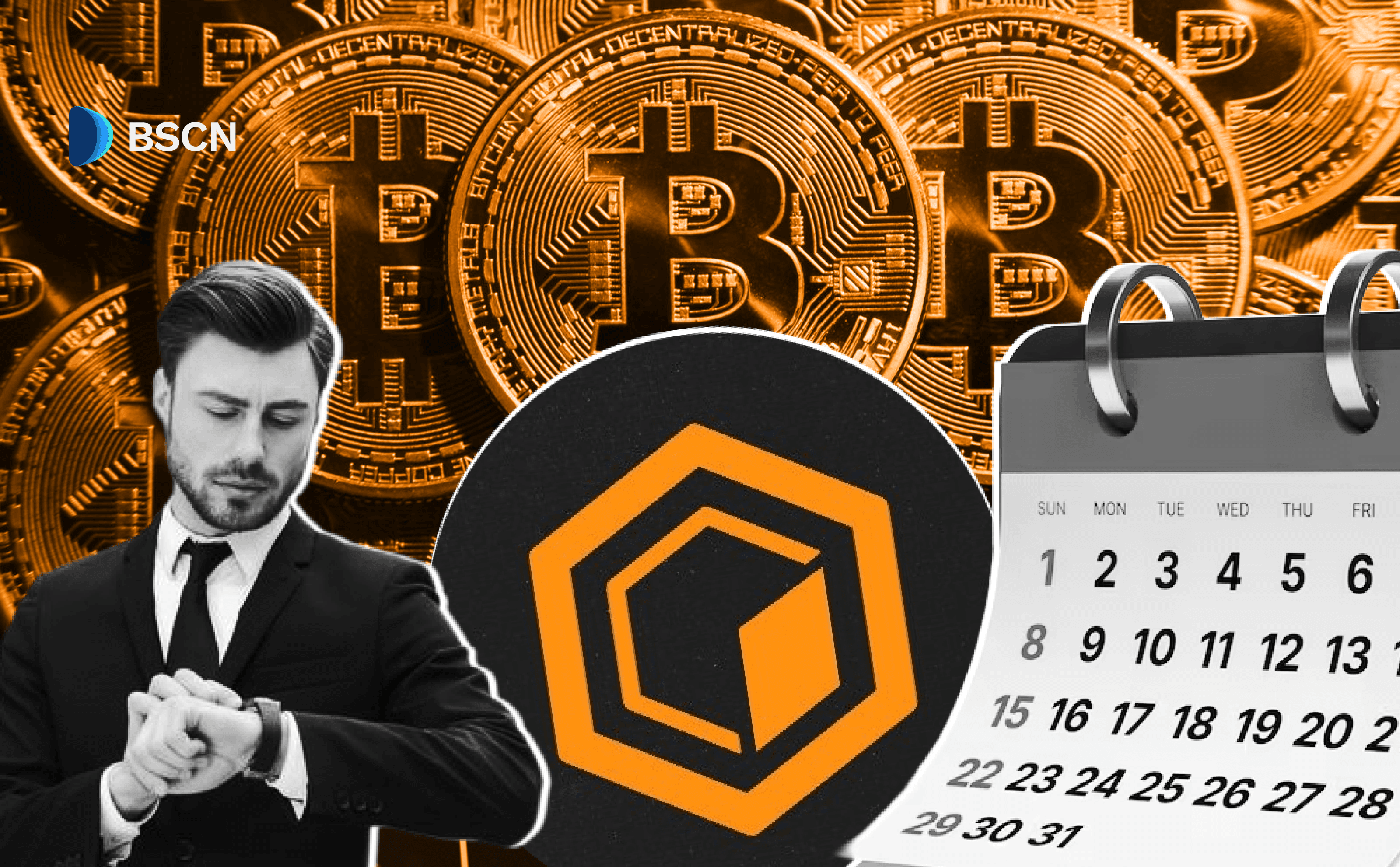WEB3
Go on Girl! - Weekly Newsletter from Kabezo

The Weekly BSC News Newsletter from Kabezo
George
September 18, 2022
The U.S. Consumer Price Index benchmark measure of inflation gave a virtuoso performance this week. The CPI May release came in at 8.3% against a consensus forecast of 8.1% by the world’s economics brain trust.
Market reaction was swift and severe. Within minutes, the S&P 500 stock index dropped 5% and has yet to recover. Bond markets in the U.S., Europe, and Japan sold off, with yields well higher than pre-pandemic levels
Commodity prices were steady for U.S. buyers but were more expensive for everyone else as the mighty dollar continued its wrecking ball rise against the Euro, Yen, and Yuan. The wreckage is clearly visible in energy prices with the Euro price of Brent crude oil trading near the all-time highs of 2008 when the dollar price was over $140.00 per barrel.

Energy is obviously central to any economy, and the supply challenges in Europe look like they may well be met. After pushing last week to help European energy producers hamstrung by margin calls estimated in the € trillions, European Comission President Ursula von der Leyen was again the lectern. In a speech to the EC, a body best known for countless volumes of regulations and an exquisite selection of cheeses in the cafeteria, the former German defense minister blasted away with wartime rhetoric while wearing the colors of the Ukraine flag.

“I want to make it very clear — the sanctions are here to stay.”
“This is the time for us to show resolve, not appeasement.”
“This is not only a war unleashed by Russia against Ukraine. This is a war on our energy, a war on our economy, a war on our values, and a war on our future.”
“This is about autocracy against democracy. And I stand here with the conviction that with courage and solidarity, Putin will fail, and Europe will prevail.”
She then outlined a plan to raise €140 billion from energy firms that have enjoyed windfall profits as a result of the energy crisis. The funds, amounting to about €300 for every EU citizen, would be used to help shield businesses and consumers from the financial hardship caused by soaring energy prices.
Those very strong words were met with support from leaders around Europe and beyond.
As a young foreign exchange trader in Frankfurt during the birth of the Euro project, I was excited to be at the center of what many in finance predicted would be a catastrophe. According to the common wisdom, cobbling together a group of nations with myriad petty hatreds into a single currency regime was an act of madness.
In the end, I and many others spectacularly underestimated the political will that would be committed to the Euro’s success. I will not underestimate the Europeans again.
To the Germans, the war is not some arcane conflict in a distant land. According to Google Maps, Passau, Germany, is a 9.5 hour drive from Uzhhorod, Ukraine (where my grandfather was born). They, like most Europeans, know what is at stake.
Judging by Ursula’s words and how they were received, I expect resolve and plenty of money to steady the European project through any crisis, energy or otherwise. If I was a knife-wielding energy trader, I would not be making long energy bets against Ursula and her posse, especially with TTF natural gas futures over $200.

Crypto joined in the hysteria that followed the CPI release with BTC dropping 10% and breaching the $20K level. Although a putative inflation hedge should trade higher on a hot CPI number, BTC is still regarded and traded as a risk asset.
The long-anticipated merge of the Ethereum legacy proof-of-work blockchain with its shiny new proof-of-stake chain came off without a hitch on Thursday. Market participants were so excited by the prospect that they sold ETH from a euphoric pre-merge rally to $1,780 down to below $1,500.
Was the CPI miss of 0.2% really the cause of all this damage to the markets? Nobody knows. But that is the dominant narrative. And at its core lies an interest rate component. Markets are now pricing in a rate hike of at least 0.75% at the next FOMC meeting on Sept. 21, and for the Fed policy rate to top out at 4.5% in June 2023. The consequences of this tightening of credit are expected to be a recessionary economy and a more challenging environment for businesses.
Not to get too wonkish, but I can kind of see how this release could change a few minds about the path of interest rates. Macro traders often look at the second derivative of a trend. Is it accelerating or is it decelerating? The headline CPI numbers look like they are decelerating, even with the 0.2% miss.

But the core number, excluding food and energy, seems to waiver on the deceleration trend.

I am not the only macro geek thinking that inflation has peaked, the world economy is already in recession, and prices for everything will be dropping – at least in dollar terms. But if that thesis is wrong and price rises resume an acceleration, I can see much higher interest rates and much lower prices for stocks and houses and crypto.
That is the way Ray Dalio, the legendary founder of hedge fund behemoth Bridgewater Associates, sees it. In a LinkedIn post after Tuesday’s CPI release he predicted inflation would be sustained at around 5%, short-term interest rates would rise to at least 4.5%, and stock prices would drop another 20% from these levels. That is pretty Armageddon-ish.
Bond markets indicate something different. The benchmark 10-year U.S. Treasury Yield resumed an orderly climb to the June highs approaching 3.5%. But with 2-year yields at 3.9%, the yield curve inversion has deepened. The 2s-10s spread is near the August lows at -0.44%.

The bond market sees an economy in recession, the Fed’s tightening of credit as procyclical and inappropriate, and economic and financial market hardship will cause them to pivot next year and start cutting rates. Basically, the 2s-10s inversion is telling the Fed that they already have the recession they want, but if Jerome Powell wants higher rates anyway, have at it!

Risk-Free ... Really?
All of these are so-called risk-free rates. Rates that are paid out with no risk of default. With the Merge now in the rear-view mirror, discussions about the risk-free rate on Ethereum are no longer theoretical.
Current ETH staking yields are roughly 4%. In a certain quirky sort of way, ETH staking yields are like the yields in the traditional banking system. Banks accept demand deposits that they lend out, earning the spread between their borrow and lend rates. They are basically paid to maintain their ledgers, similar to the way ETH stakers are paid to maintain the Ethereum blockchain. While that rate is not entirely risk-free due to slashing, it may become the basis for lending rates within the ecosystem.
It is clear that this has not yet happened. With ETH 327,300 ($473 million) on Compound earning 0.13% and ETH 718,950 ($1.04 billion) on AAVE earning 0.68%, an arbitrage is open and waiting to be closed.

Lenders on these protocols are probably also borrowers of other coins and are earning by employing different strategies. But they are presenting an opportunity that TradFi players would bite your arm off for.
There are other anomalies as well. Using 4% as a staking yield, futures prices should theoretically be discounted 1% per quarter to account for the “risk-free” yield available to stakers. Yet deferred futures prices on the largest exchanges, such as Binance, FTX, and Deribit, are tracking spot prices closely.
These markets still need to make progress on their efficiency.

Efficiency was on the mind of Securities and Exchange Commission (SEC) Chairman Gary Gensler this week. In his prepared remarks to the Senate Banking Committee, he mentioned that “Markets work best when they are transparent and competitive.” Further on, regarding equity markets, he said “We have not updated our national market system, our equity system, in 17 years. Imagine if you had in your pocket a phone that was 17 years old. You’d think, ‘Oh my god maybe I should update that phone.’ Technology moves fast.”
Shortly after that, under questioning from Senator Pat Toomey of Pennsylvania regarding the regulation of cryptocurrencies, Gensler made references to the Securities Act of 1933, the Securities Exchange act of 1934, and a 1946 decision by the U.S. Supreme Court in the case of SEC v. W.J. Howey Co.
His comments were made with a straight face.
The ’33 Act and ’34 Act are laws created to regulate the issuance and trading of securities. SEC versus Howey gave birth to what has become known as the “Howey Test” of whether something is a security. Remarkably, nobody at the hearing appreciated the humor of discussing the regulation of cryptocurrencies under laws enacted during the administration of Franklin Delano Roosevelt and applied via a test made by a court case of similar vintage regarding a grapefruit grove. Yet here we are.
The laws in question ensure disclosure of the risks and opportunities of a security to investors. Transparency certainly is a benefit to the public. But the costs of SEC registration range in the millions, limiting access to capital markets to companies big enough to afford it. Early-stage companies can register for an exemption from SEC registration to raise capital from “qualified investors,” meaning rich folks. This effectively excludes the general public from the best investment opportunities. An example of this is the sequence of funding rounds for Facebook.

Goldman Sachs, the last investor at the highest valuation, more than doubled their money in 16 months.
I wonder how many early investors in ETH, BNB and SOL regret not being protected by such laws?
At many times in the past, and during the hearing this week, Gensler has repeated that he thinks almost every crypto is a security, except Bitcoin. Enforcement actions against various players in the crypto space bear out his views.

Coinbase, the only crypto exchange to register for an initial public offering, has been in the crosshairs of the SEC’s targeting. Despite this, Coinbase has been challenging the view that most cryptos are securities by, among other things, listing new coins for trading at a rapid pace.
Senator Toomey appears to share that skepticism. In the hearing, he veritably grilled Gensler about what it is about Bitcoin that makes it not a security whereas almost every other coin is a security. Toomey suggested that decentralization was the distinctive property. In otherwise slick and well-informed testimony, Gensler fumbled. He referenced the Howey test, which holds that a security is something that is created when there is an investment of money in a common enterprise with the expectation of profit derived from the efforts of others.
Pressing the point, Toomey asked, “Is it possible to have a common enterprise if something is decentralized? Isn’t centralization necessary to constitute a common enterprise?”
Gensler fumbled.
Toomey: “What is it about Bitcoin that causes you to conclude it is not a security?”
Gensler: “There is no group of individuals in the middle”
Toomey: “Right, it is decentralized.”
My point is not to pick on Gensler, whom the U.S. is fortunate to have as a regulator because of his past scholarship and deep understanding of crypto, but instead to point out the difficulty of fitting crypto into the current regulatory framework. There are certain properties of crypto that cannot change. Legislation needs to make space for those properties if crypto is to move beyond being the Wild West of libertarian dreams and fulfill its destiny as a world-changing technology.
Binance CEO Changpeng Zhao said it well when he suggested that we shouldn’t be asking “What kind of horse is a car?”
It seems Toomey agrees when he concludes that “… It is not reasonable to fail to provide clarity …” on what properties would make a crypto a security.
This is an arcane legal point. Due to the outsize influence of the U.S., it is a vitally important one for the crypto space.
Author

George
Latest News
Crypto Project & Token Reviews
Project & Token Reviews
Comprehensive reviews of crypto's most interesting projects and assets
Learn about the hottest projects & tokens
Latest Crypto News
Get up to date with the latest crypto news stories and events







